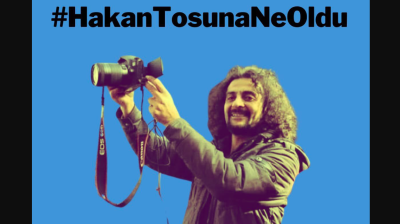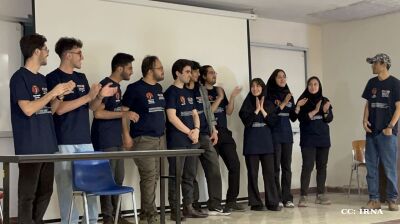Iranian President Masoud Pezeshkian has ordered a study into relocating the country's capital from Tehran, appointing his deputy Mohammad Reza Aref to lead what could be one of the most ambitious urban projects in Iran's modern history, local media reported.
"Tehran as the capital faces insurmountable problems. Whatever we do, we're just wasting time," Pezeshkian said during a visit to the Khatam al-Anbiya headquarters on November 20. "We have no choice but to move the country's economic and political centre to the south, closer to the sea," he added.
Throughout its more than 3,000-year history as various empires and states, Iran has hosted over 30 different capital cities. Each capital city marks a distinct chapter in Iranian history from the Achaemenids' golden city of Persepolis to the Safavids' architectural marvel Isfahan to 20th-century Tehran. These shifting seats of power trace a path across the Iranian plateau, with rulers choosing new capitals for strategic defence, political symbolism, or economic advantage.
The announcement marks the latest chapter in Iran's decades-long discussion about relocating its sprawling capital of 15 million people, which faces severe environmental challenges, including earthquakes, water scarcity, land subsidence, and air pollution.
The initiative, while ambitious, follows similar historical precedents. Brazil moved its capital from Rio de Janeiro to Brasilia in 1960, while Malaysia established Putrajaya as its administrative capital in 1995, though Kuala Lumpur remains the country's political and economic hub.
Tehran's problems have become increasingly acute. The city suffers from severe air pollution during winter months, while experts warn of dangerous ground subsidence due to excessive groundwater extraction. The capital's location far from Iran's southern ports also creates logistical inefficiencies for the country's economy.
"We can't continue bringing raw materials from the south and the sea to the centre, processing them, and sending them back south for export," Pezeshkian said. "This severely depletes our competitive capability."
The concept of relocating Iran's capital has been raised by successive governments since the 1980s. The first serious proposal came during Prime Minister Mir-Hossein Mousavi's tenure, with subsequent administrations under presidents Hashemi Rafsanjani, Khatami, and Ahmadinejad all considering similar moves.
In 2015, parliament passed legislation to study the feasibility of relocating the administrative and political centre, leading to the formation of a Supreme Council for Capital Reorganisation in 2018. However, the initiative was shelved in 2020 during the COVID-19 pandemic.
Pezeshkian's administration appears more determined than its predecessors. The president emphasised that government officials must lead by example: "We can't sit in Tehran and tell people to relocate. We must move first, and people will follow."
The appointment of Aref, a respected technocrat and former university chancellor, suggests a more systematic approach to the relocation study. However, experts warn that successful capital relocations are rare in the modern era, with most examples dating from before the 1950s.
The announcement comes as part of broader government efforts to develop Iran's southern regions. Pezeshkian revealed he personally oversees weekly progress on developing the Makran coast, a strategic stretch of shoreline along the Gulf of Oman.
"If we can revitalise the north-south corridors of the country, we will have taken a fundamental step in the country's development," he said, adding that the government is seeking international investment and expertise for the Makran development project.
The initiative faces significant challenges, including the massive cost of building new government infrastructure and convincing Tehran's residents and businesses to relocate. Previous estimates have put the cost of such a move in the hundreds of billions of dollars, a daunting figure for an economy under international sanctions and a fiscal shortage.
Environmental experts, however, argue that the cost of inaction could be higher. Tehran's annual air pollution crisis forces school closures and poses severe health risks, while some neighbourhoods have reported dangerous ground subsidence rates due to climate change and extraction of water resources.
The government has not specified potential locations for the new capital, though previous studies have suggested sites closer to the Persian Gulf and Gulf of Oman. Any chosen location would need to consider factors including climate, accessibility, and natural disaster risks.
Pezeshkian stressed that development visions should not be constrained by specific timeframes. "Even if we've achieved the goals of previous programmes, the development outlook must always continue," he said.
"First, they should relocate the Oil Ministry and its subsidiaries to the south, then move shipping and oil transport companies. The industrial ministry's operations would work better near Yazd and Kerman, whilst religious affairs could be based in Mashhad. With e-government, we don't need everyone physically present anyway," suggested on commenter to IntelliNews.
"This needs to happen gradually - starting with ministries and government departments," offers another person on the street of the current capital city.
"Moving the capital anywhere would be a mistake," argues 38-year-old Mahziar. "We should follow Malaysia's example - building a new administrative centre near the existing capital, perhaps near Chalous or in the Soltanieh region of Zanjan. Just move the administrative centre, not the entire capital with its economic and cultural hub."
A pragmatic voice chimes in: "Let the government and president successfully develop one place first, then think about moving."
Earlier in September, the president said, "We have no choice but to move the country's political and economic centre closer to the southern waters," Pezeshkian said during a visit to infrastructure projects on September 7. He said that continuing the current trend of development in Tehran is unsustainable, particularly given the water scarcity.
The president highlighted the inefficiency of transporting raw materials from the south to the centre for processing, only to send finished products back south for export. "This severely depletes our competitive power," Pezeshkian stated.
Mehdi Chamran, chairman of Tehran City Council, also weighed in on the debate. "Various governments have raised this issue, but it hasn't led to a specific outcome," Chamran told reporters on September 8. He stressed the need to distribute the country's affairs across all provinces and cities, acknowledging that while Tehran's problems are significant, issues like water scarcity affect other regions as well.
Chamran highlighted past attempts to address the capital's challenges, including discussions during previous administrations that did not yield concrete results. "What's important is the distribution of the country's issues across all provinces and cities, and this seems necessary," he added.
Features

BEYOND THE BOSPORUS: Investigators feel collar of former Turkish central bank deputy governor
Regime gangs continue to hustle for gains. Some Erdoganist businessmen among the losers.

Journalist beaten to death in Istanbul as security conditions in Turkey rapidly deteriorate
Publisher, meanwhile, is shot in leg. Reporters regularly experience violence, judicial harassment and media lynching.

Agentic AI becomes South Korea’s next big tech battleground
As countries race to define their roles in the AI era, South Korea's tech giants are now embracing “agentic AI”, a next-generation form of AI that acts autonomously to complete goals, not just respond to commands.

Iran's capital Tehran showcases new "Virgin Mary" Metro station
Tehran's new Maryam metro station honours Virgin Mary with architecture blending Armenian and Iranian design elements in new push by Islamic Republic

.jpg)

